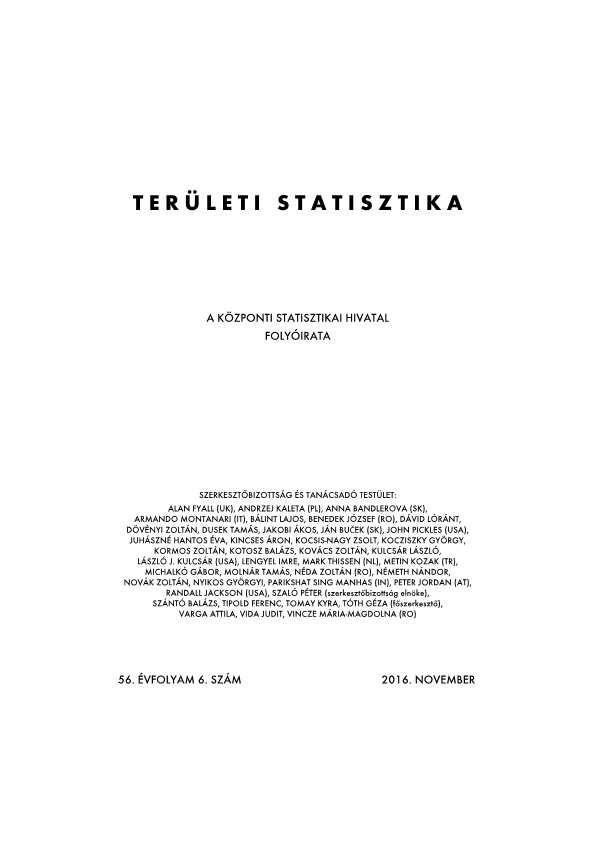A nyugdíjasok és a nyugdíjak területi egyenlőtlenségei
Magyarországon
Spatial inequality of pensioners and pensions in Hungary
Author(s): D. László Molnár, Marcell BreuerSubject(s): Social Sciences, Economy, Geography, Regional studies
Published by: Központi Statisztikai Hivatal
Keywords: pensioner; district; inequality; choropleth; autocorrelation
Summary/Abstract: Regional differences in the proportion of pensioners andthe amount of pension were analyzed at district level.Data of 2.7 million pensioners were aggregated at theCentral Administration of National Pension Insurancewith SAS Enterprise Guide. Aggregated data of theDepartment of Demography and Social Protection of theHCSO were also used for the computations. A districtlevel country map was digitized manually from publiclyavailable data and then projected according to the WGS84 standards, which was compatible with the ITRSsystem. Choropleths were created in the R programmingenvironment using ggplot2 and other packages. Moran’sI coefficient as an index of autocorrelation was calculatedto quantify the similarities of outcome variables amongareas that were defined as spatially related. Simultaneous(SAR), conditional autoregression (CAR) and bayesianmodels were fitted to assess the spatially autocorrelatedprocesses. Further analysis was also made on individualdata records of 2.7 million persons. Almost every variableshowed a strong positive spatial autocorrelationindicating similarities among areas. A direct line runningfrom Zala county located in the South-West upto thecapital city of Budapest and then circling round theagglomeration area of Budapest seems to cut the countryinto two parts: a northwestern wealthy and an easternpoorer part. A partially complementary relationship wasseen among the proportion of old-age pensioners,disability pensioners and the average number of regularsocial beneficiaries per 1000 inhabitants. The collapse ofthe communist regime and its aftermath, i.e. the closureof the outdated industrial manufacturing plants and aconsecutive high unemployment rate led to spatialinequality in terms of reduced eligibility for statutory oldagepension with a lower retirement age, and higherprobability of getting disability pension or social benefitin certain geographic areas. The larger towns in theEastern part of the country are exceptions of the generalrules in terms of pension provisions. Possible solutionsare mentioned to reduce spatial inequality of pensionersand the amount of pension.
Journal: Területi Statisztika
- Issue Year: 56/2016
- Issue No: 06
- Page Range: 619-642
- Page Count: 24
- Language: Hungarian

